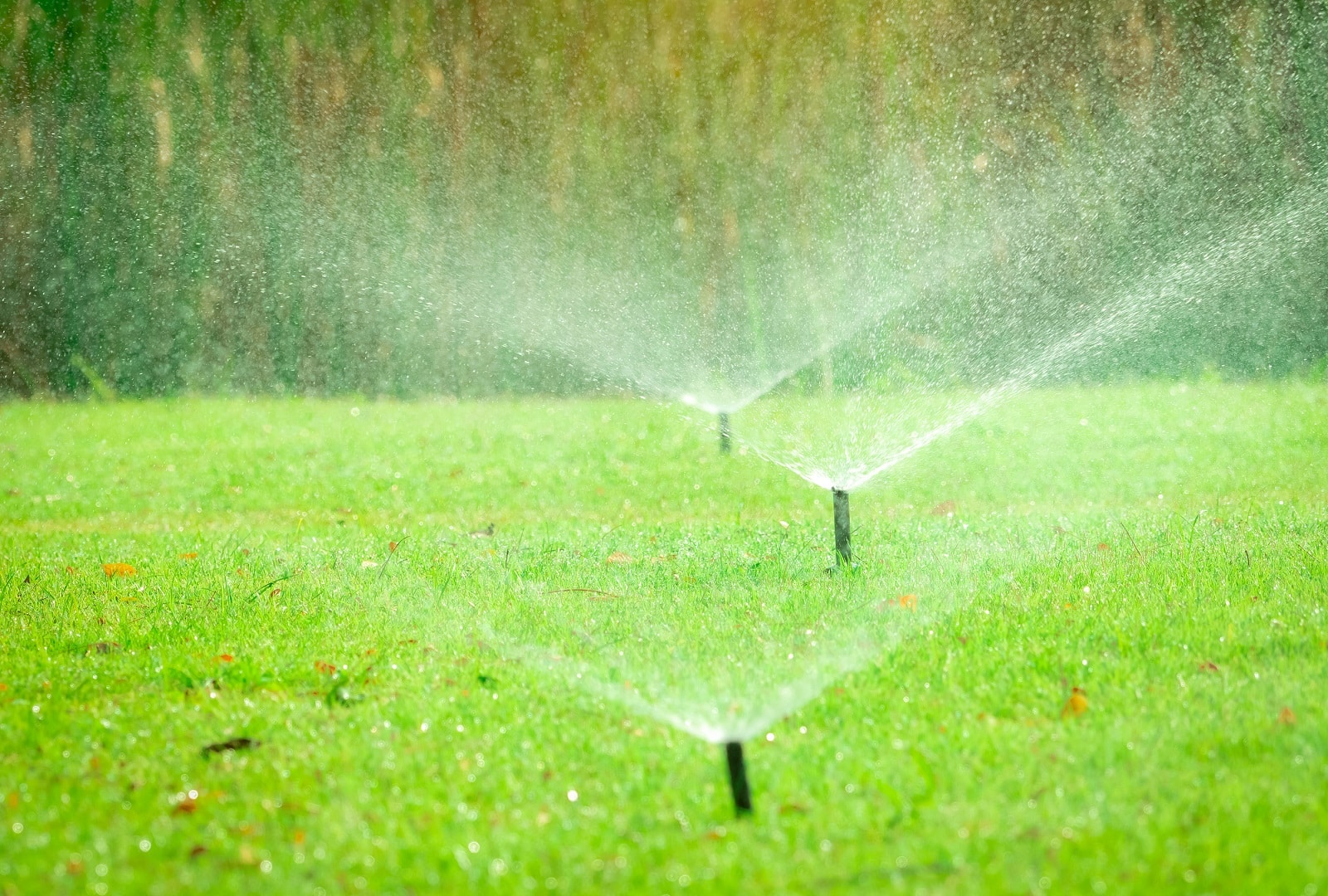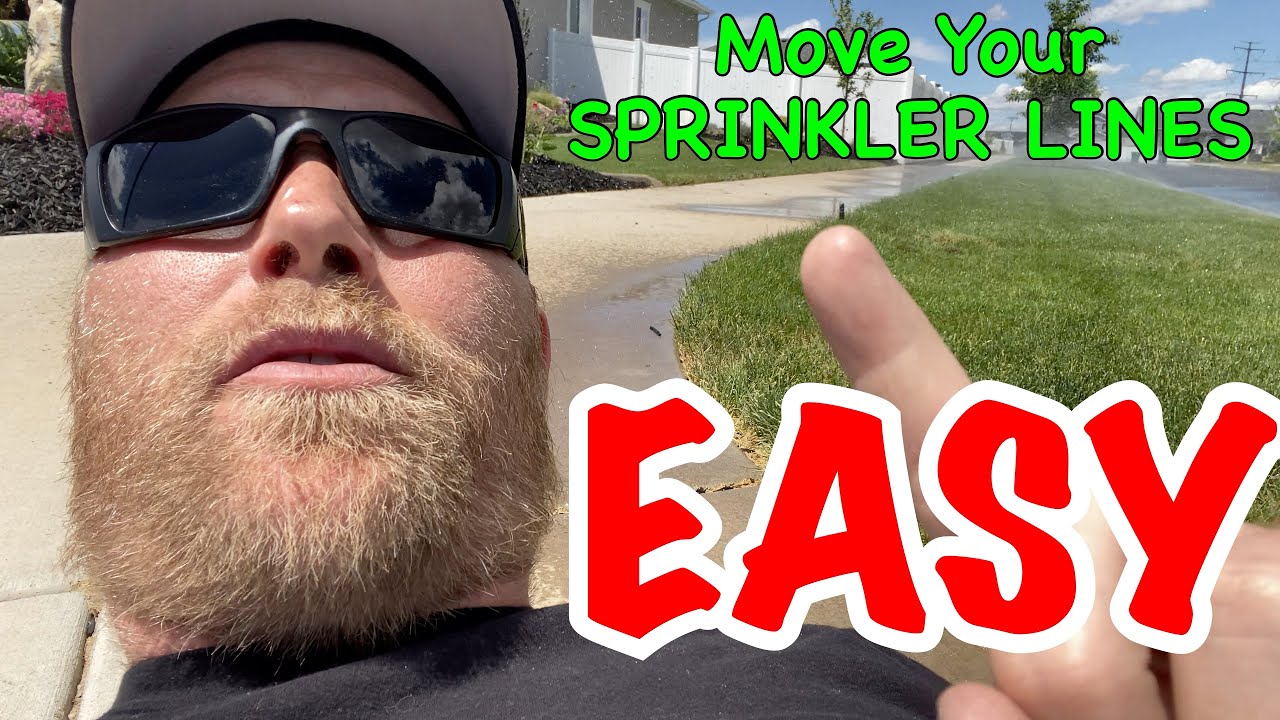To move sprinkler lines, first, turn off the water supply, dig up the existing lines, and carefully disconnect them. Next, determine the new location for the lines, dig a trench, and install the new lines, ensuring they are connected properly.
Finally, cover the trench and test the system to ensure proper functionality.

Credit: www.sprinklerdrainage.com
How to Move Sprinkler Lines: Step by Step Guide
Assessing The Sprinkler System
Understanding the current sprinkler layout is the first step in assessing the sprinkler system. Identifying the need for relocation is crucial to ensure efficient watering. Analyzing the new location is important for achieving optimum coverage. Evaluate the area to identify any obstacles or potential improvements.
Consider factors like sunlight exposure, soil conditions, and plant growth patterns. Adjustments may be needed to ensure the sprinkler lines are positioned correctly for even distribution. Review the existing water pressure and make any necessary adjustments to ensure adequate coverage.
Carefully plan out the new layout and take measurements before making any changes. By following these steps, you can successfully move the sprinkler lines and optimize the watering system.
Gathering The Tools And Materials
To move sprinkler lines effectively, you’ll need a range of essential tools and materials. These include pipe extensions and fittings for creating new connections. It’s also crucial to have the right safety equipment to ensure a smooth and hazard-free process.
Before starting, gather items such as pipe cutters, pvc glue, teflon tape, a shovel, and a pipe wrench. These tools will help you cut and connect the pipes easily. Additionally, safety equipment like gloves, safety glasses, and sturdy shoes should not be overlooked.
With the right tools and materials at hand, you can confidently undertake the task of moving sprinkler lines.
Shutting Off The Water Supply
Moving sprinkler lines requires shutting off the water supply. First, locate the main water shut-off valve. Safely turn off the water supply to prevent any mishap. Next, drain the system to ensure there are no leaks. By following these steps, you can move your sprinkler lines without any issues.
Digging Trenches For The New Layout
Digging trenches for a new sprinkler layout involves selecting a trenching method, either manual or machinery. Determining the trench’s depth and width is crucial for pipe installation. Before starting, clear the area and mark the trench path accurately to avoid any mistakes.
Carefully plan your trenching method, considering the size and landscape of your yard. If you choose the manual method, be prepared for the physical effort it requires. Machinery may speed up the process, but you should have proper knowledge to operate it safely.
Remember to dig the trench deep enough to accommodate the sprinkler lines and wide enough for easy installation. With proper planning and execution, moving sprinkler lines can be a smooth and effective process.
Disconnecting And Extending The Pipes
To disconnect and extend sprinkler lines, first, detach the sprinkler heads and valves from the existing pipes. Then, extend the pipes to reach the new location. Make sure to join the extensions securely using fittings and connectors. By following these steps, you can effectively move your sprinkler lines to a different area in your garden or yard.
With the right tools and techniques, it is possible to reconfigure your sprinkler system to suit your landscaping needs. Whether you’re relocating the lines for better coverage or to accommodate a new layout, this process can be done with precision and efficiency.
Take your time and double-check your connections to ensure a seamless transition for your sprinkler lines.
Installing The Updated Sprinkler Layout
Installing the updated sprinkler layout involves placing the new pipes into the trenches. Once in place, align the sprinkler heads and valves correctly to ensure optimal performance. To guarantee a leak-free system and proper water flow, it is essential to test the system thoroughly.
Following these steps will help you efficiently move your sprinkler lines and ensure effective irrigation for your lawn or garden. With careful planning and execution, you can achieve a well-functioning sprinkler system that keeps your green spaces healthy and vibrant.
Backfilling And Landscaping
Moving sprinkler lines involves backfilling the trenches carefully to avoid any damage to the pipes. It is crucial to compact the soil for stability and level it properly. Once the backfilling is done, the next step is to rebuild the landscape to its original condition or even upgrade it.
Properly filling the trenches is essential to ensure the sprinkler lines function optimally and are protected from any potential issues. Take care to follow these steps diligently to ensure a smooth and efficient movement of sprinkler lines. By paying attention to the backfilling process and taking the time to rebuild the landscape correctly, you can avoid any future complications and enjoy a well-maintained irrigation system.
Activating The System And Inspection
To move sprinkler lines, start by activating the system and conducting a thorough inspection. Restore the water supply and check for leaks, adjusting sprinkler heads if necessary. Ensure the entire system is inspected to maintain proper functionality and avoid any issues.
Moving sprinkler lines requires attention to detail and careful consideration to ensure optimal performance. By following these steps, you can effectively relocate your sprinkler lines without any complications. Keep in mind the importance of regular maintenance and inspection to keep your irrigation system in top shape.
Investing time and effort into moving your sprinkler lines will ensure that your yard remains properly watered and maintained.
Maintenance Tips For An Efficient Sprinkler System
Regularly inspect your sprinkler system for leaks and damaged components. Adjust the sprinkler heads as needed to accommodate the changing landscape. To optimize water usage and prevent issues, perform seasonal maintenance tasks. By doing so, you can ensure that your sprinkler system operates efficiently and effectively.
Check for any leaks or cracks in the lines, valves, or sprinkler heads. Replace any damaged components promptly. In addition, make sure to adjust the direction and pattern of the sprinkler heads to accommodate any new plantings or hardscape features.
Consider the watering needs of different areas in your landscape and adjust the watering schedule accordingly. Lastly, clean the nozzles and filters regularly to prevent clogging and ensure proper water flow. Regular maintenance will keep your sprinkler system running smoothly and help avoid costly repairs in the future.
Troubleshooting Common Sprinkler Line Relocation Problems
Moving sprinkler lines can sometimes present challenges. One common issue to troubleshoot is low water pressure after relocation. It’s important to address this problem promptly to ensure proper irrigation. Additionally, leaks or breaks in the new pipe connections can occur during the relocation process.
These should be dealt with diligently to avoid further damage. Another problem that may arise is uneven distribution of water throughout the sprinkler system. To overcome this, careful troubleshooting is necessary to identify the root cause and make the necessary adjustments.
By following these guidelines and addressing these common problems, you can successfully move sprinkler lines and maintain an efficient irrigation system.
Frequently Asked Questions Of How To Move Sprinkler Lines
How Do You Reroute An Irrigation Line?
To reroute an irrigation line, follow these steps: 1. Assess the existing system and determine the new pathway for the line. 2. Mark the desired route using stakes or flags. 3. Turn off the water supply and drain the system to avoid leakage.
4. Disconnect the existing line from its source and remove any fittings or attachments. 5. Dig a trench along the new route, ensuring it is deep enough for the line to fit comfortably. 6. Install the new line, making sure it is level and sloped correctly for proper water flow.
7. Connect the new line to the water supply source and secure it with appropriate fittings. 8. Test the system for any leaks or issues before covering the trench with soil. 9. Adjust the sprinkler heads or emitters accordingly to ensure proper coverage.
10. Turn on the water supply and monitor the system for several days to ensure it is functioning correctly.
How Easy Is It To Move Sprinkler Heads?
Moving sprinkler heads is not difficult. It can be done easily. Remember, it requires careful management. Start by turning off the water supply to the sprinkler system. Use a shovel to carefully dig around the existing sprinkler head. Remove the old sprinkler head by unscrewing it counterclockwise.
Clean and inspect the connection threads. Screw the new sprinkler head onto the sprinkler riser by turning it clockwise. Be cautious not to overtighten, as it can damage the threads. Fill in the hole and make sure the new sprinkler head is level with the ground.
Once you have completed these steps, restore the water supply and test the sprinkler head to ensure it is functioning properly. Moving sprinkler heads can be done quickly and easily with a few simple steps.
How Do I Find My Sprinkler Lines Without Digging?
To locate your sprinkler lines without digging, you can use a few different methods. One option is to use a metal detector, which can detect the metal pipes underground. Another method is to use a wire detector, which can locate the wires that connect to the sprinkler heads.
Alternatively, you can hire a professional service that uses specialized equipment like ground-penetrating radar or electromagnetic induction to locate the underground lines. These methods can accurately locate the lines without the need for extensive digging. Whichever method you choose, remember to proceed with caution and follow any safety guidelines when working around underground utilities.
It’s always a good idea to consult with professionals if you’re unsure about the exact location of your sprinkler lines.
How Do You Move An Underground Sprinkler Head?
To move an underground sprinkler head, follow these steps: 1. Shut off the water supply to the irrigation system. 2. Use a shovel to carefully dig around the existing sprinkler head, exposing the supply pipe. 3. Unscrew the sprinkler head from the supply pipe, using a wrench if necessary.
4. Determine the new location for the sprinkler head and dig a hole at the desired spot. 5. Insert the sprinkler head into the new hole and connect it to the supply pipe, ensuring a secure fit. 6. Cover the hole with soil, ensuring that the sprinkler head is level with the ground surface.
7. Turn on the water supply to the irrigation system and check for any leaks or issues. 8. Adjust the sprinkler head as needed to ensure proper coverage and distribution of water. 9. Test the sprinkler system to ensure it is functioning correctly.
10. If necessary, make any further adjustments or repairs before concluding the process.
Conclusion
Moving sprinkler lines can be a challenging task, but with the right approach, it can be done smoothly and efficiently. By following the steps outlined in this blog post, you can ensure that your sprinkler lines are relocated without causing any damage or disruption to your landscaping.
Start by carefully planning and mapping out the new layout for your sprinkler system. Next, gather the necessary tools and materials, and be prepared to dig and reroute the lines as needed. It’s important to take your time and be cautious when working with the water supply and electrical connections.
Finally, once the lines are moved, make sure to test the system thoroughly to ensure that it is working properly. By taking these steps, you can successfully move your sprinkler lines and maintain a healthy and vibrant landscape.

